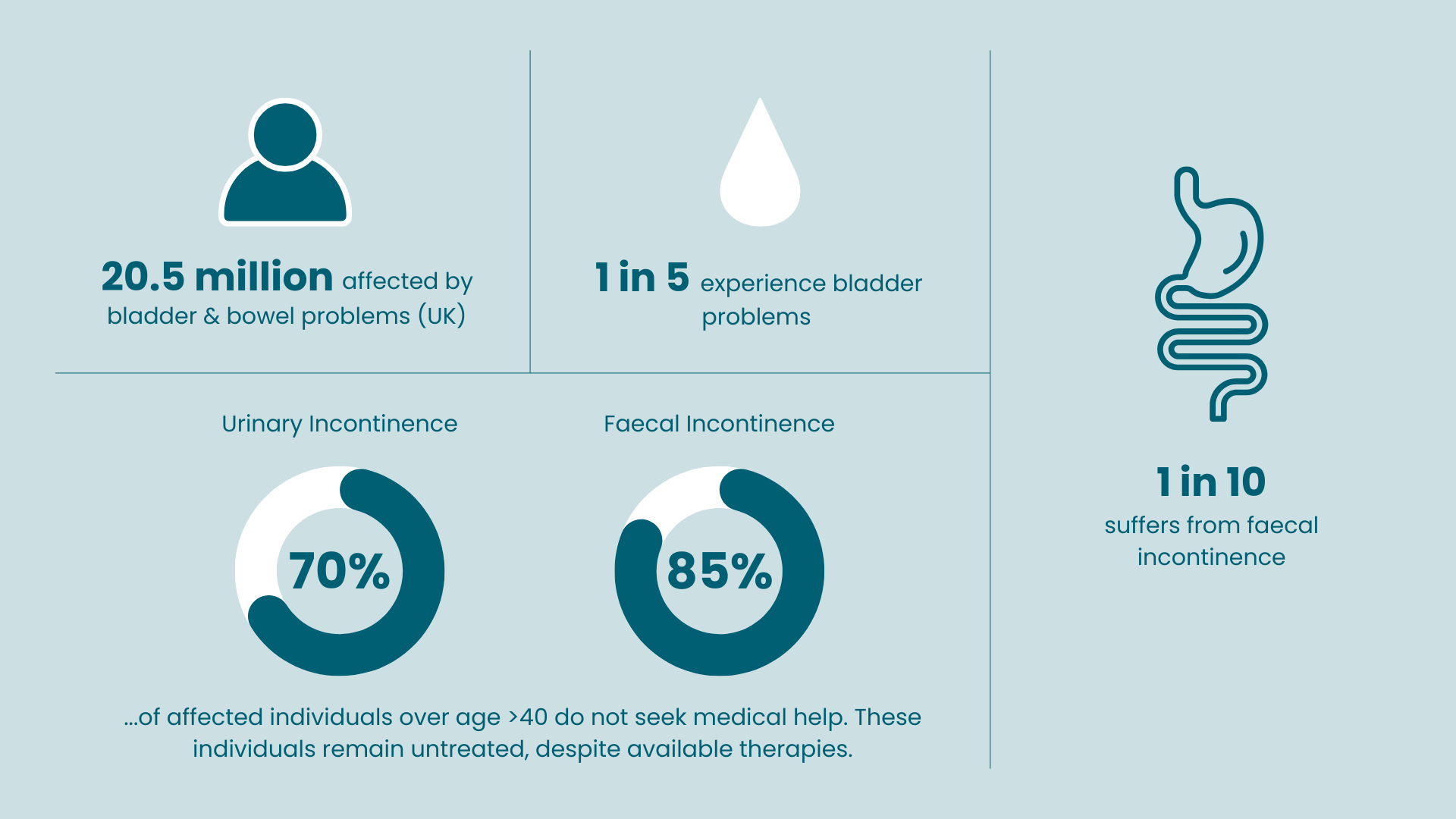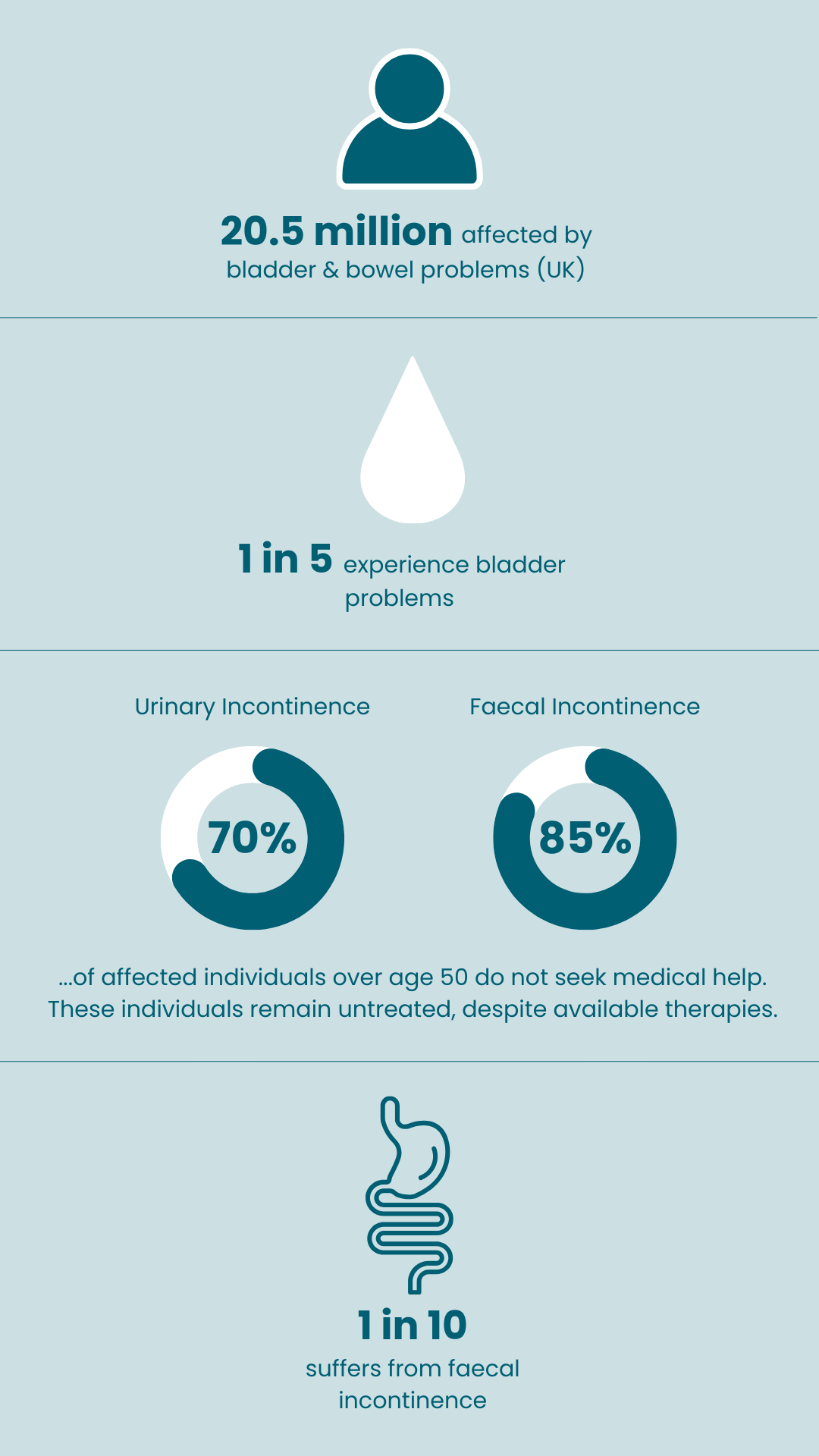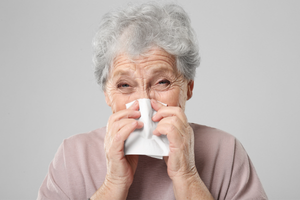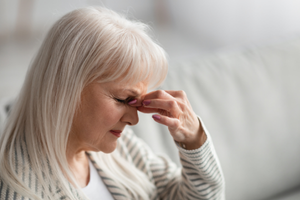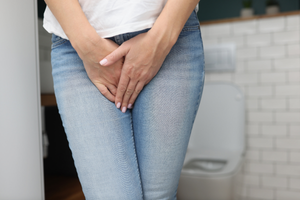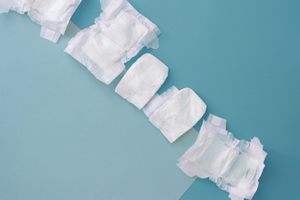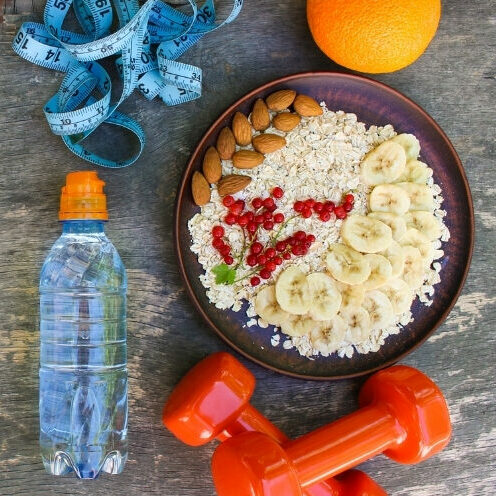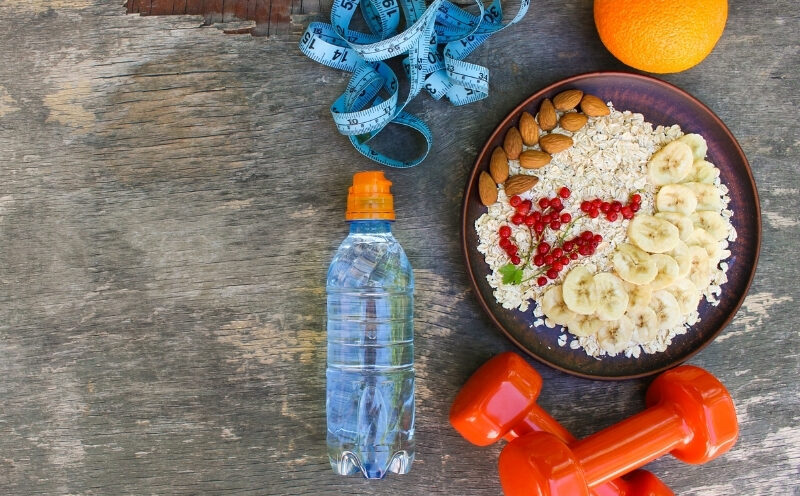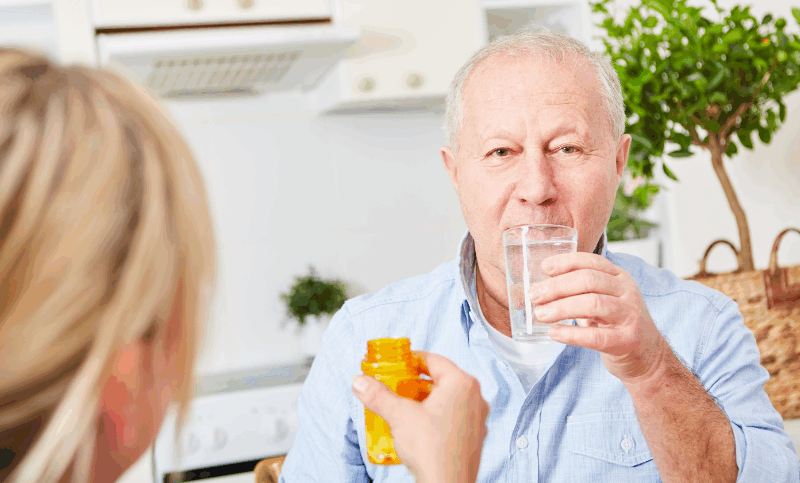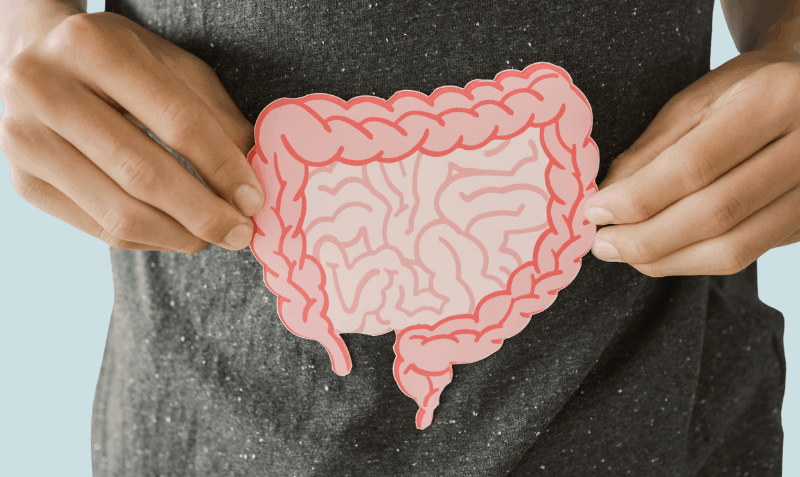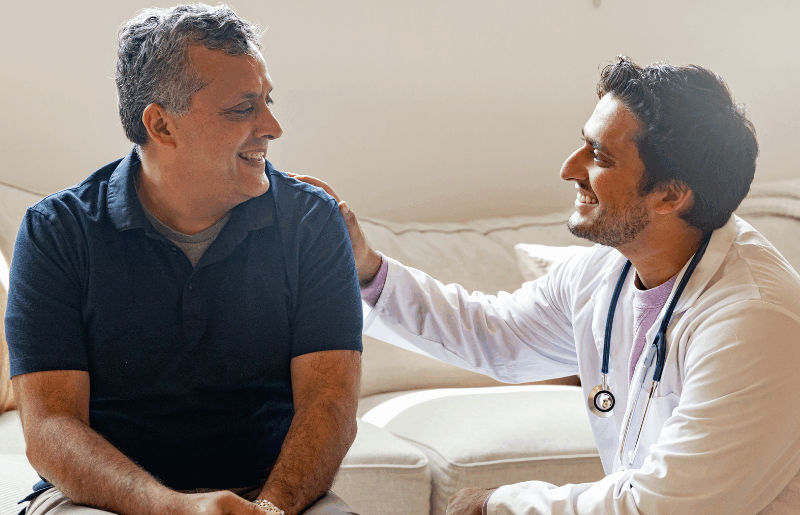Uncovering Pathways in Continence Care
Urinary and faecal incontinence are more common than you might think—and both can have a profound impact on daily life and wellbeing. If you’re struggling with incontinence, you’re not alone. In the UK around 20.5 million individuals are affected with bladder and bowel problems.
Yet, despite how widespread these issues are, many people feel unable to talk about them. In fact, more than 70% of people with urinary incontinence, and as many as 85% with faecal incontinence, don’t seek help. Too often, this means going without the support or treatment that could make a real difference.
We believe everyone deserves to live confidently and comfortably. On this website, you’ll find clear, practical information and resources designed to help you understand your symptoms, explore treatment options, and feel empowered to take the next step—at your own pace.
Choose your path to better care
Select Urinary or Faecal Incontinence to get tailored support and resources.
What is Urinary incontinence (UI)
Bladder control problems can be treated, and there are ways to manage the symptoms. Many people mistakenly think that losing control of urine is just a normal part of getting older or something that happens after having a baby. However, it is actually a medical issue that should be discussed with a doctor. It’s important to seek help if you’re facing these challenges.
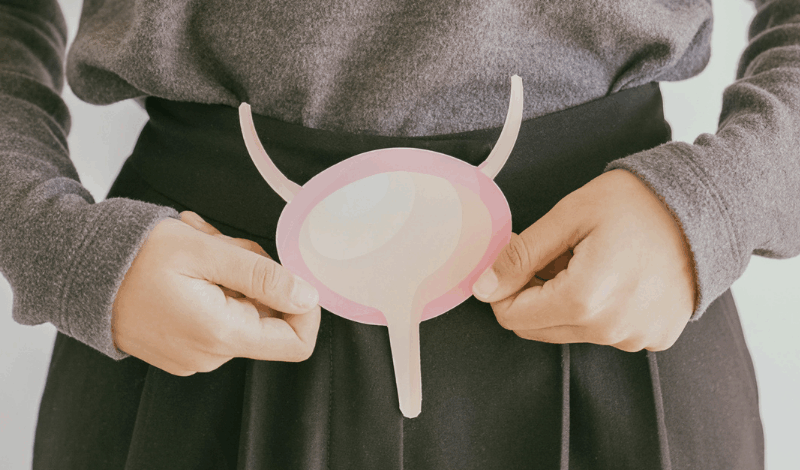
Urinary incontinence treatment options
If you’re dealing with issues like frequent urges to go to the bathroom or unexpected leaks, the good news is that there are ways to treat these problems. While using pads and other simple solutions can help, they might not fix the underlying issues causing your symptoms. There are more options out there that can provide better relief.
Behavioural treatments
There are several lifestyle changes and simple actions you can take to help manage urinary incontinence. Here are a few suggestions that might make a difference:
- Weight loss/maintaining a healthy weight
- Reducing the intake of stimulants (e.g. caffeine, theine, alcohol)
- Maintain an appropriate level of hydration
- Keeping a bladder diary on paper (some hospitals also offer digital tools, such as the Minze Diary Pod).
- Perform bladder training
Pelvic floor exercises can help strengthen the muscles under the uterus, bladder and large intestine. They can help men and women who experience problems with urinary leakage or bow el control.
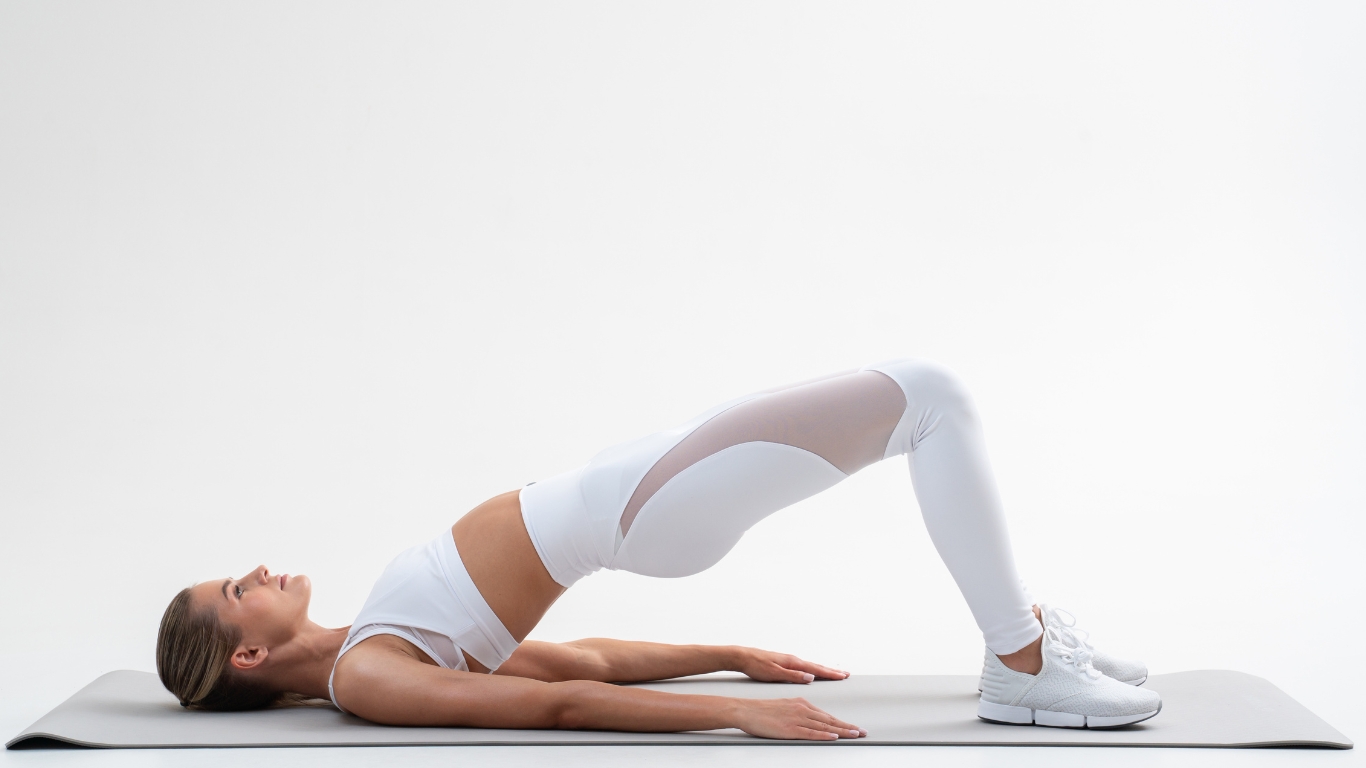
Hypopressive abdominal gymnastics involves working on the abdominal region using breathing techniques based on expiratory apnea.
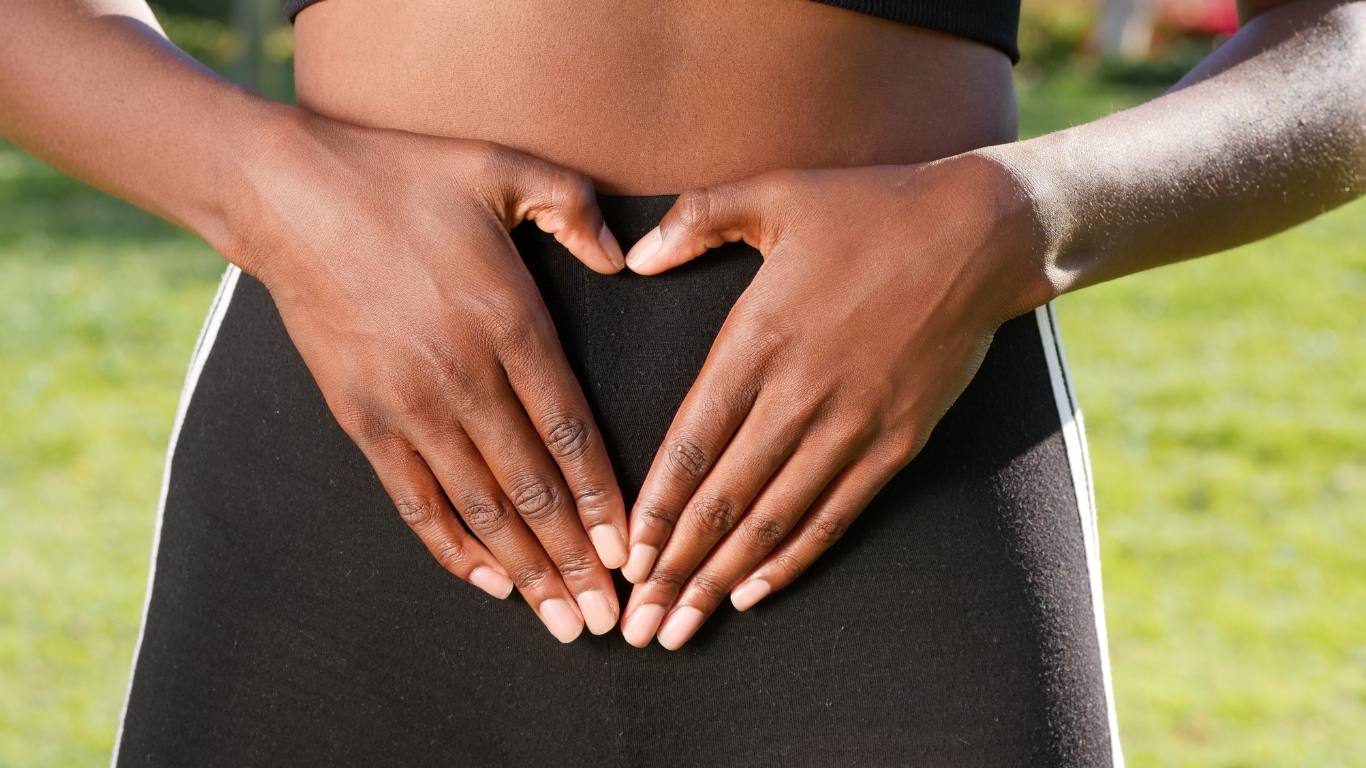
Medication
Medications can be useful for treating different types of incontinence, which is when someone has trouble controlling their bladder. However, it’s important to know that these medicines might come with some unwanted effects.
- Anticholinergics or beta-3 agonists for urinary incontinence.
- Antibiotics for urinary tract infections.
- Oestrogen therapy for mild forms of stress incontinence.
Non-surgical interventions
- For overactive bladder symptoms:
Botulinum toxin A (Botox) injections every six months which are used to reduce bladder contractions by acting on nerve endings in the bladder wall
- Percutaneous posterior tibial nerve stimulation: The minimally invasive technology stimulates the posterior tibial nerve near the ankle, transmitting electrical impulses that regulate neural activity of the bladder and bowel.
- An injectable bulking therapy used for stress urinary incontinence, where a gel is placed around the urethra to improve its closure and help limit accidental urine leakage.
Surgical therapies
Surgery might be necessary if other treatment methods aren’t effective. Some options for surgery include:
For stress incontinence: slings made of a surgical mesh that restore the normal anatomy of the bladder.
Sacral neuromodulation (SNM): This treatment uses a low-intensity electrical current to stimulate the sacral nerves, which play an important role in controlling the urinary and faecal systems. The treatment can be tested by the patient and is reversible. Read more about the Sacral Neuromodulation therapy
Downloads
Download this patient pathway flyer for a quick overview of symptoms and treatment options. It can be helpful for discussing symptoms and treatments with your healthcare provider.
Download the interactive Patient Decision Aid to explore second-line treatments and find the option that’s right for you. Share this with your doctor to explore treatment options together.
Urinary incontinence myths Vs facts

Myth
Incontinence is a normal part of aging.
Fact
While UI is more common with age, it is not inevitable. It often has treatable underlying causes, and many older adults remain continent with proper care and treatment.

Myth
Only women experience urinary incontinence.
Fact
Although women are more likely to experience UI due to childbirth and hormonal changes, men can also develop UI, especially due to prostate issues or surgery.

Myth
If you drink less water, you’ll leak less.
Fact
Reducing fluid intake can actually worsen UI by concentrating urine and irritating the bladder. Staying hydrated is important for bladder health.

Myth
UI is only caused by weak pelvic floor muscles.
Fact
Pelvic floor weakness is one factor, but neurological disorders, medications, infections, and lifestyle also play a role. Not all cases are about muscle strength alone.

Myth
There’s nothing you can do — just use pads.
Fact
Many effective treatments exist, from pelvic floor therapy and medication to surgical options like sacral neuromodulation or bladder Botox. Pads are not the only solution.
Your Health, Your Voice
Incontinence is more common than you might think—and you’re not alone. Our downloadable resources are here to help you better understand your symptoms, explore treatment options, and prepare for meaningful conversations with your healthcare professional.
Feel empowered to be involved in your care. These tools are designed to support open, informed discussions with your doctor, helping you take positive steps towards your health and wellbeing.



